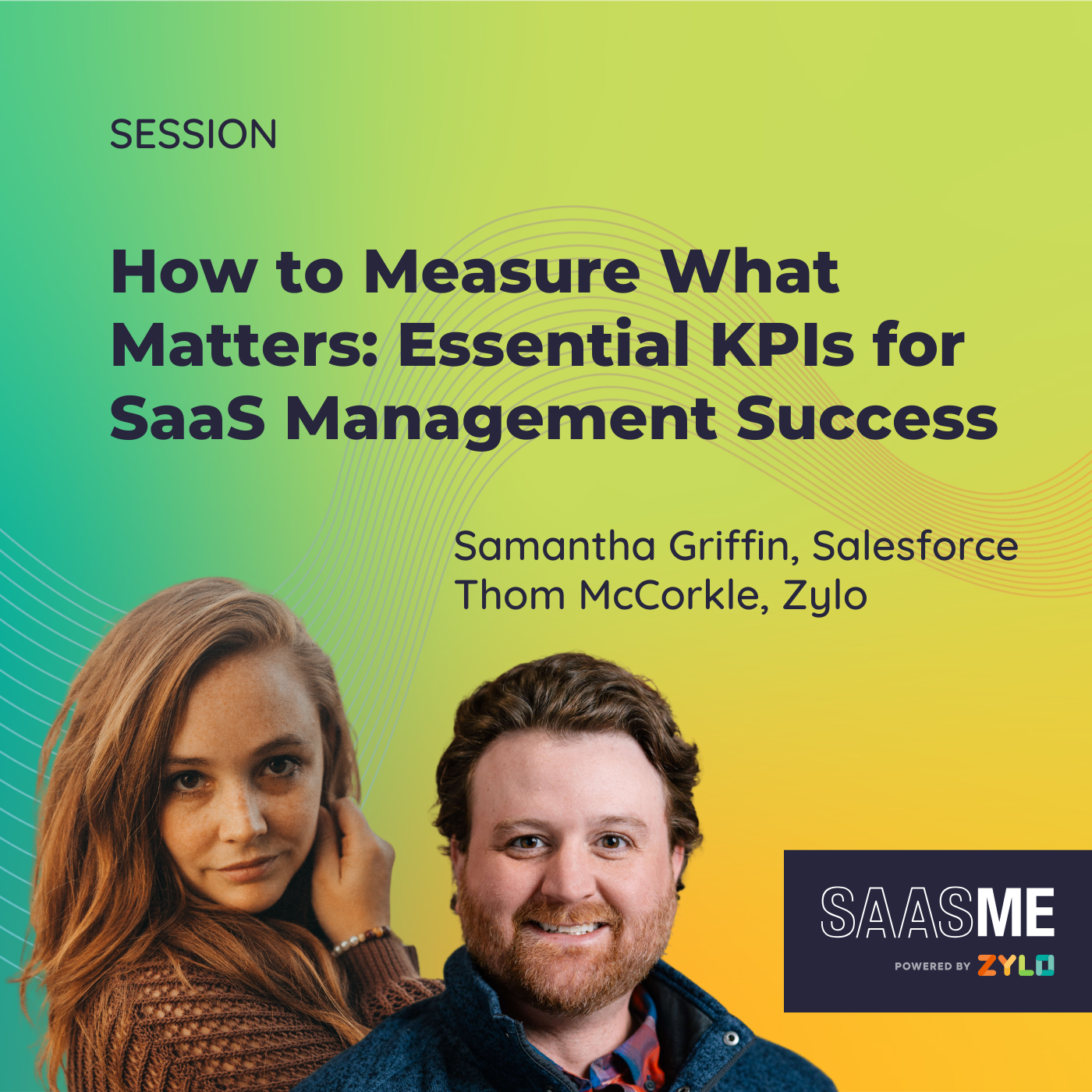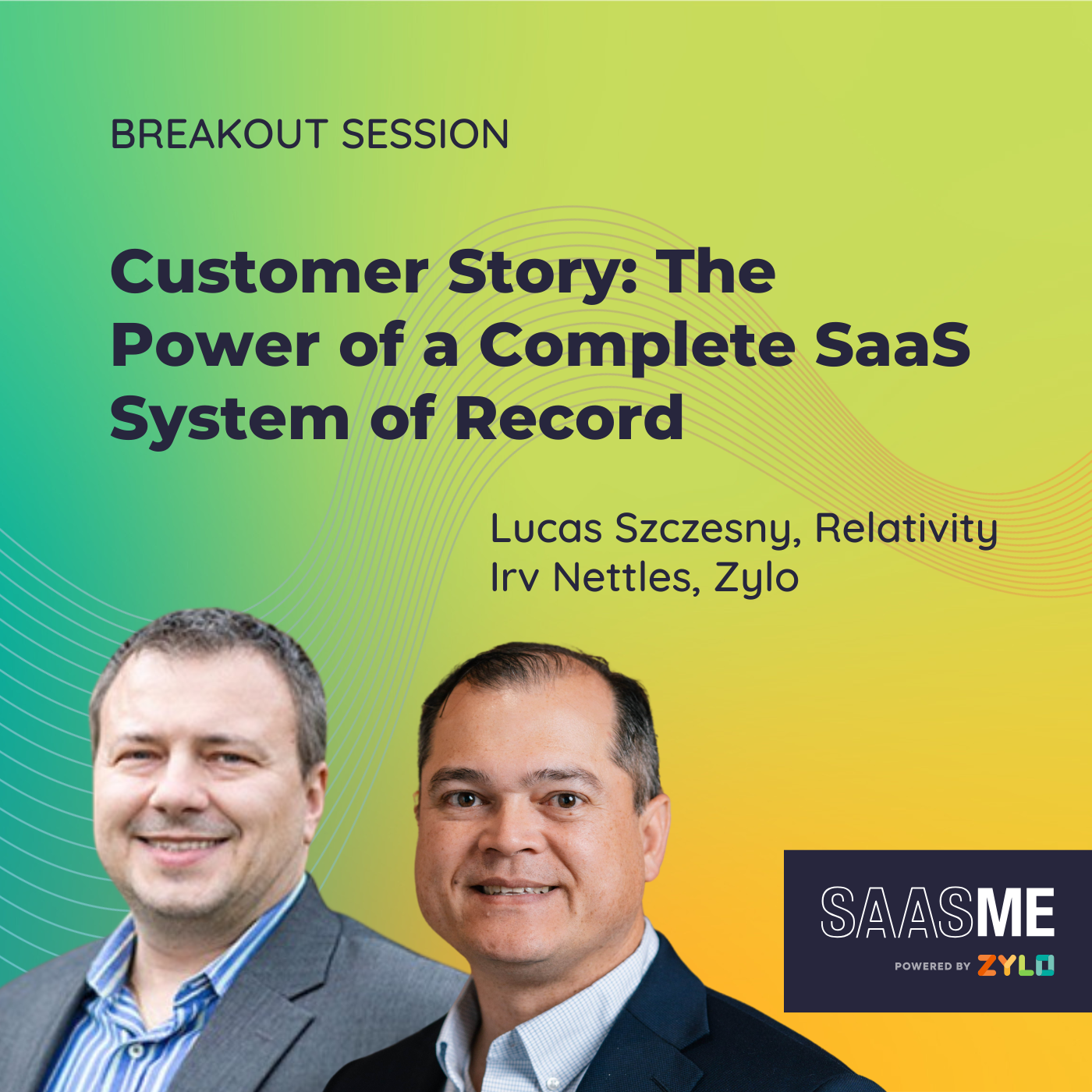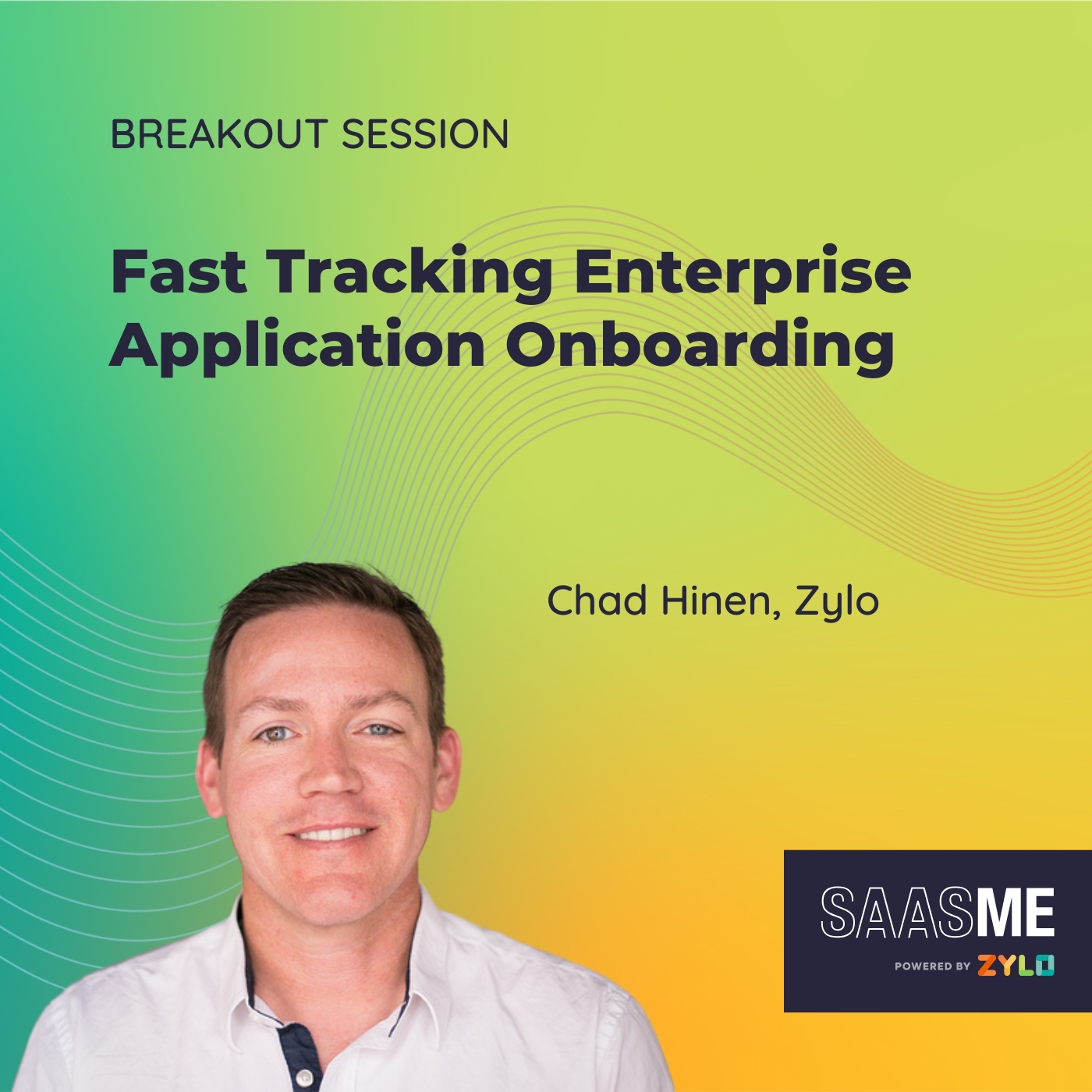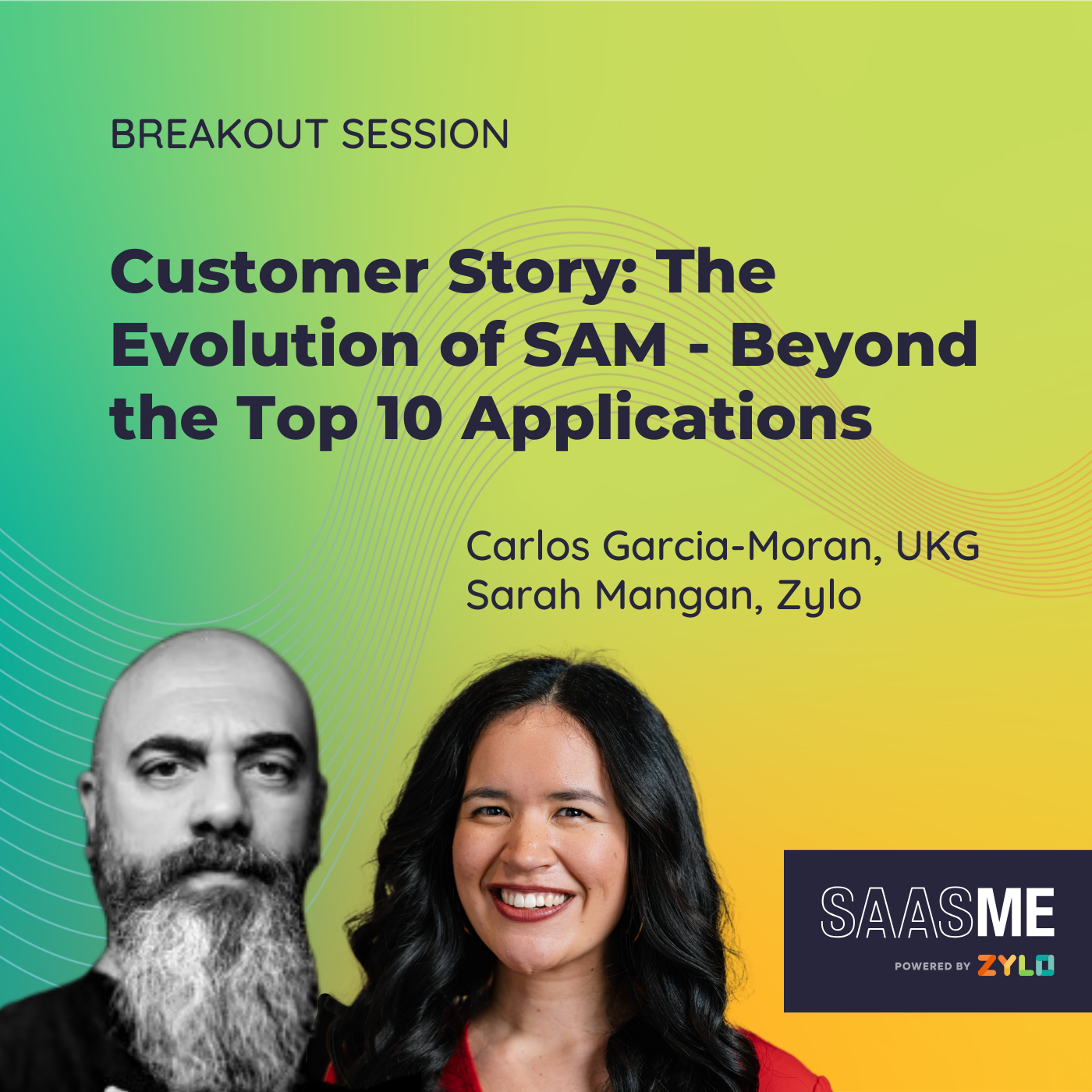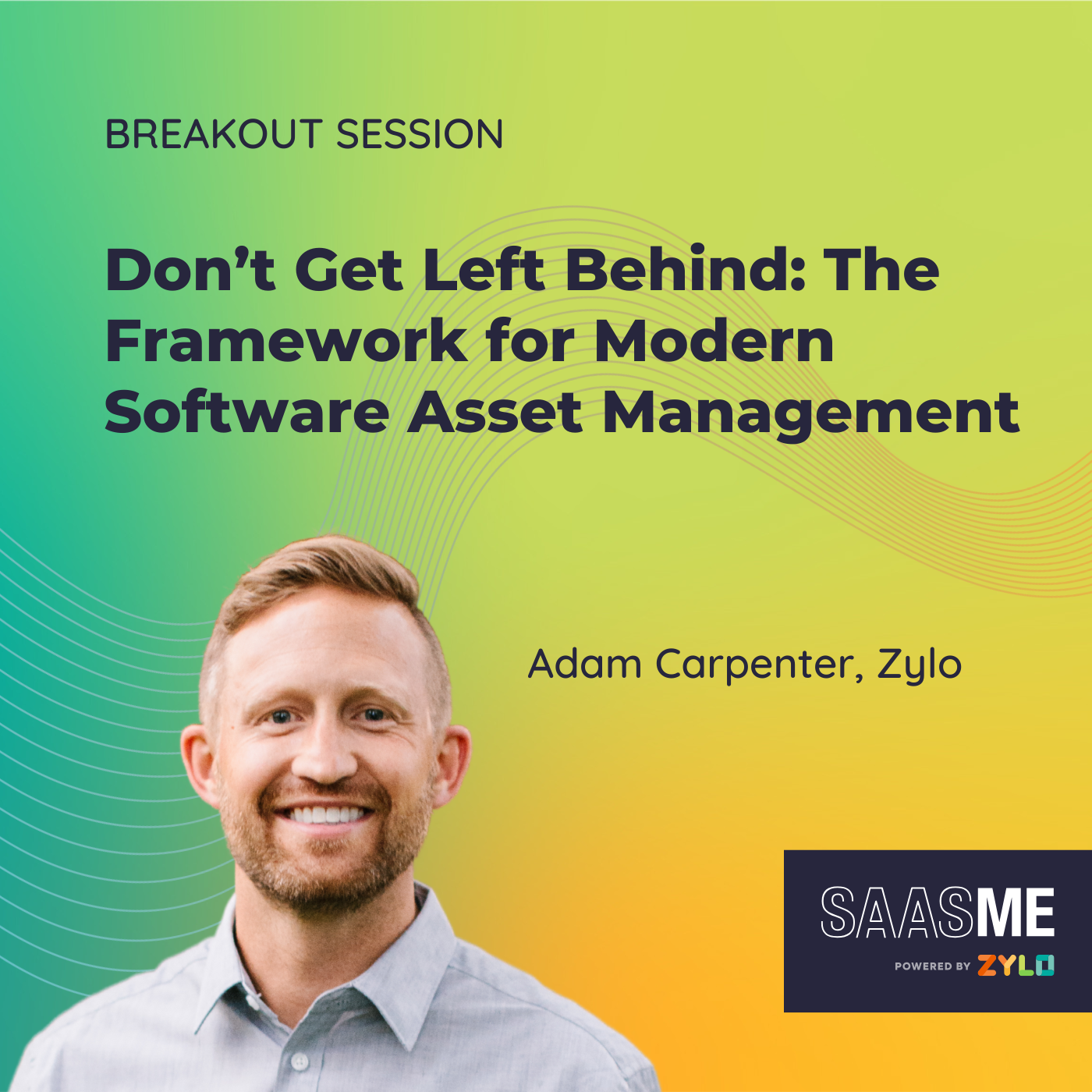How to Measure What Matters: Essential KPIs for SaaS Management Success
- 0.5
- 1
- 1.25
- 1.5
- 1.75
- 2
Thom McCorkle: Good afternoon, good morning, good evening, whatever time it is in the area of the world you're joining us from. I have the pleasure of chatting with a strategic customer of mine, one whom there's no better resource to talk about measuring what matters, essential KPIs for SaaS management success. I'm Tom McCorkle. I'm a strategic account executive here at Zylo. I've been with the company for a little over eight years. It is my pleasure to introduce Samantha Griffin with Salesforce. I had to go back and look at the first time that you and I had a meeting together in my inbox. It was April 30th, 2020, so we're almost at five years, off and on, of working together. Sam is a two- time Zylo customer. She's most recently rolled out the Slack integration at Salesforce. All through her career, she has really leaned in on SaaS in the SAM role and really modernizing that profession to make sure that SaaS is being managed with the same rigor that we did with our traditional on- prem tools. But the tools are different, so we're going to talk a little bit about that and some of those metrics. Sam, thank you so much for joining. Anything you'd love to say in addition to that?
Samantha Griffin: With an introduction like that, I don't think there's any room for me to add anything else. Thank you for having me here today. I'm really excited to talk about all the metrics that we're tracking.
Thom McCorkle: Awesome. Always a pleasure. Really quick on the agenda, we're going to do a quick introduction into Salesforce so you can understand how their team works and looks like. We're going to talk about their desired outcomes and their challenges. But then, we're going to jump into an example dashboard inside of the Zylo platform outlining those metrics and why they're important to the Salesforce team, and likely important to you. With that in mind, Sam, maybe give us a little overview of Salesforce, a little bit overview of the SAM team at Salesforce.
Samantha Griffin: Yeah, happy to. I am coming up on my one- year anniversary with Salesforce, very exciting times, and my one- year anniversary with the SAM team here. We've got a global SAM team with people in various places across the planet. North America, India, Dublin, and a handful of other locations as well. And a team of about, I would call it 20 or so people. We cover all areas of the business, but to date and historically speaking, software asset management at Salesforce has been primarily living within the business technology or the IT side of the house. We're actually working on rolling out software asset management to the entirety of the business right now.
Thom McCorkle: Awesome. That's a big undertaking. I'm sure there's lots of goals and metrics aligned to that. Really excited to learn more. It's a perfect segue into your desired outcomes. When you think about what it is you're trying to achieve of both inside of your traditional SAM portfolio living inside of IT, as well as those outcomes of going full enterprise, what does that look like for you?
Samantha Griffin: I think everybody's probably tired of hearing me talk about application rationalization at this point, and I feel like a broken record saying it yet again. But that is probably our number one priority going into this fiscal year, is to make sure that we are not only rationalizing our tech stack, but also establishing strong standards for what tools we want our users to be pursuing for certain business use cases. Really, establishing what's my primary and what's my secondary. Then working on our own team's maturity. Making sure that we have a good understanding of what's within the current IT or BT house, and then making sure that we're prepared to move forward on that enterprise journey. Then, you can't do either of those things without having some wins under your belt and being able to showcase, " Hey, I have cost savings. Here, let me show them to you." I would say that's the one, two, three of what we're really looking to achieve this year.
Thom McCorkle: Awesome, love that, especially when you think about those cost savings. When you have a program that is almost self- evident, it justifies itself, pays for itself, drives savings for the business, that makes a lot of sense. Any program, especially when you start thinking about app rationalization, which we're going to talk about when we're in the platform as well, that is trying to limit applications that maybe people like, or even the scale of Salesforce. Let's talk a little bit about some of the challenges that the team has faced and how we're getting around those.
Samantha Griffin: Yeah. From a challenge perspective, you've got all areas of the business that are deeply embedded with very specific tooling. Some may or may not be revenue generating or customer facing, so those are use cases that you need to be able to solve for and speak to. Which is inherently difficult, because people are not going to want to take time out of their day to talk to you, a software asset manager, about why their tool that they use every day should go away. Really, just finding and understanding the business use cases to do the further analysis against what the spend is, how many users are on the platform, is the two sides of that coin there that's most difficult for us. Is getting people to agree to have a conversation, and then really drilling into the metrics and data to make a decision.
Thom McCorkle: Awesome. Well, speaking of metrics and data, let's go ahead and transition here out of slides, into an example dashboard for how Salesforce thinks about the various metrics that are important to them. Quick housekeeping note, this is not Salesforce's data. Rather, it's a representation of those KPIs. Obviously, data protection is really important. With that out of the way, we're going to look at a dashboard. Probably a lot of the folks on the call haven't seen a Zylo dashboard, so I'll try and explain what we're looking at as we go along. Sam, high level, what are some of those key areas that we're going to see as we jump into the application?
Samantha Griffin: Yeah. We're going to talk through how we look at applications across Salesforce as a whole, so what's living within that BT side of the portfolio versus the unmanaged, uncentralized side of the portfolio. We're going to talk about the different metrics that we look at for those applications and making sure that we have an understanding of who our primary user base is, what cost centers are going through and purchasing, what the amount that we're spending and contracted to versus the amount that we are sometimes truing up or overextending ourselves from a budgetary perspective. We're also going to talk about how we track and showcase savings, and use all of that and put a bow on it once a month to bring it up to our software governance council and our leadership.
Thom McCorkle: Awesome, I love it. Well, as I mentioned at the top of the session, you're a second- time Zylo user. What is that switch from a pretty respectably sized enterprise company to a truly global enterprise like Salesforce look like for you, and what's ultimately different there?
Samantha Griffin: It's enamoring. I thought I had a good handle on all things SaaS and spend related, and then I walked into my first day at Salesforce and I was completely blown away by just the sheer number of tools and the amount of spend. It's nice to have the consistency of the same platform in both of these places so that I can just start day one drilling into, okay, how much of that spend, and AP spend specifically, is allocated to business technology. Let's start there and really just drink from the fire hose from what we have.
Thom McCorkle: Awesome, I love that. With that in mind, maybe describe a little bit on what we're looking at in this dashboard and how those metrics are important to Salesforce.
Samantha Griffin: Yeah. This is a lot of data in one small screenshot, so I'll try to be efficient with it. From a total app standpoint, you can see that we are at 1600 applications just from this one snapshot. Only a small, I would call it not even 20%, you can see it's 97 different BT owned applications sit within our portfolio and make up just a very small percentage of that 18 mil out of 181 mil of annual contracted spend. This helps us level set with, " Hey, where can we drill down? What categories of applications sit within our portfolio already? Then, how can we take a more granular approach to those specific categories?" It also helps us see what opportunity we have around expense spend. Everybody loves to put just a software application in this day- and- age on their credit card, move along, and move cancel in a couple of months. But we have been going through a number of different initiatives where we're trying to factor that in as cost avoidance and cost savings as well, and we're communicating that to our broader leadership team. Each one of these helps us tailor in a specific way whether or not it's drilling down on a category basis and trying to decided which areas of the business to focus on for application rationalization. Or to showcase where we have room to grow and bring more into our toolset.
Thom McCorkle: Awesome. While it's only a percentage of all the applications, it's a very important set of the portfolio. When you think about ownership in that BT SAM versus departmental ownership, how do you think about that? To put it another way, how do you determine what apps that you're going to control and you traditionally own versus something that's owned by the business?
Samantha Griffin: Yeah. It's a difficult question and I think it's something that's up for every software asset management team to decide. We put some rigor and some structure around what are the specific parameters and what would we define as an enterprise or a software asset management handled or serviced application. For us, it's looking at how many users are on the agreement, and that's free or paid users because you have some of those applications that span across the free and paid markets. We took a percentage of our total employee count. We said, " If it's above this percentage, then it should likely sit with us." Then we took the same approach from a spend perspective. We said, " If it's over this amount from a total contract value, it should likely sit with us." Then also, if there are three areas of the business or more using it, so that there's not really a primary use case, it should probably sit with us. When you take those three pointers and you say, " Hey, I want you to meet two out of three of these," that's how we've been strategizing and prioritizing where we're going to go and talk to the business about what it would mean to be enterprise with software asset management.
Thom McCorkle: Awesome. That's a great tip that hopefully a lot of folks jotted down, because I know a lot of people struggle with that. Last question on this area of the dashboard. Obviously, there are apps that are owned by the business. What does that look like? What does it mean to be an app owner as a business user?
Samantha Griffin: Yeah. That was another one where we were like, "We need to sit." We literally took a QBR and we strategized and wrote it down. Where we said, " Hey, this is software asset management at Salesforce is going to do for you when we take over these applications." That is helping with renewals conversations, doing the license management and allocation, and the true- ups, and the usage reviews, and the licensing footprints. Helping foster a better relationship with sourcing, making sure that your licensing footprint is always optimized and compliant. Then we had the other bucket where we said, " Hey, you, business owner, we're trying to take a lot off of your plate. But please, also provide us your use cases." Be the person who tells us when you want an exception to be made for maybe an area of the business that's using this tool and wants to come into the ecosystem with it. Also, make sure that we're doing adequate maintenance, keeping our integrations up- to- snuff. Really, that level of ownership is still sitting with the business, but the license and lifecycle management sits with SAM.
Thom McCorkle: Awesome. Well, like you said, I could easily spend this whole session on just these metrics. But alas, we have more that we would love to review. Next up, I think you have your view of ... Double- click into that BT SAM application. Maybe tell a little bit about how you use some of these metrics and why they're important.
Samantha Griffin: Yeah, definitely. When we're looking at that red, yellow, green rainbow there that talks about BT SAM apps fully onboarded. We are tracking against, and I know everybody has their own way of going about goals. At Salesforce, we call it the V2MOM. We're prioritizing, " Hey, how many applications are we actually moving under the SAM umbrella this year? Where can we showcase that?" What's great about this is we do bubble this up on a monthly cadence to our council, but we also have leadership that just wants to jump in and say, " Hey, it's the end of Q1, it's the end of Q2, how close are we to those 22 different applications? How many have actually been fully onboarded? Where are we stuck in the process?" Because bringing something into the ecosystem, it can take unfortunately months to get the answers to all of the questions and all the data that you need to know to fully bring it in. That's a great takeaway for us and has been really, really popular with our team and our leadership team. So has being able to showcase, " Hey, not only are we reducing duplication and making sure people aren't double- licensed in tools that have a significant amount of overlap," but you can also see the average cost per user clicking down as we go through the process. Then we also are trying to make sure, " Hey, are we doing a good job of keeping an eye on where we may have to go back and buy more? Or where we may have to step outside of our typical re- harvest cadence and do another cleanup effort?" That's what that box on the right- hand side is looking at. Is saying, " Hey, you have over 95% of your applications fully utilized. You may need to inaudible finance about funding, or you may need to jump in there and double the amount of license cleanups that you're performing."
Thom McCorkle: Awesome. An automate, but also monitor, to make sure that we don't find any surprises, and suddenly your help desk team is like, " I've got nothing to give this new class of onboarded employees." That's fantastic. We talked a little bit about the criteria to be an application that would be considered for SAM to onboard. What are the metrics, the levers, really the metrics and the items that need to happen for an application to be considered onboarded?
Samantha Griffin: Actually, I'm glad you asked this question because I just created a whole playbook around this, because it's a more complicated and nuanced question than you would think. You would think it's as easy of just having a handshake agreement with your business stakeholder and, " Now it's mine." But we always want to make sure that we have budget transfers aligned, and there may or may not be specific times of the year where your can initiate a budget transfer, so we try to make sure that we're working ahead there. We want to make sure that our use cases and our primary user group is documented. That way, when we do get those license requests through that come from our catalog or from a ticket, that we're triaging those appropriately. Then we also want to make sure that we have a rundown of, " Hey, this is exactly how this tool works," if somebody on our team hasn't managed it before. And, " Here's the history of the vendor relationship." We're talking with sourcing and our business stakeholders about that as well. Because when we're trying to figure out, " Hey, this is going to be our in and our plus- one for this category," we want to be going to areas of the business and with vendors that are more favorable, and easier to talk to and work with from a business perspective as well.
Thom McCorkle: Love it. Be easy to do business with. I think we've saved probably my favorite two dashboards here, or sections here, for last. I'm going to let you loose. Let's talk about savings, and what you measure, and how you report that up.
Samantha Griffin: I love to talk about savings. I desperately wish that I had already saved $4. 7 million by not even Q2 yet. Yeah, just a reminder that this is, in fact, not our real data. When we're talking about savings, and I know it's different everywhere, but we're talking about hard dollar cost savings initiatives where we're literally taking that money out of our budget and it's being reallocated for other things. That's what that savings number is. It's great to have cost avoidance, which we're achieving a lot of, with things like expense spend, maybe blocking those suppliers, maybe going and giving a three- strike warning system to those end users. But our most popular, out of all of these datasets, is that 4. 74 million against our target of 9.7 million for the year. When we're talking about that, we're also wanting to split that up into when was that savings achieved, because depending on how your area of the business recognizes savings, you're likely not recognizing the totality of deprecating a title if you're deprecating it in June. You would want to be able to deprecate it in January. We all know that savings happens at contract end or at contract renewal, so it also helps us be mindful and optimize, " Hey, if we're doing something, let's do it in January as opposed to June. Let's prioritize these four renewals that we know are coming up in December." That's where we lean there. Anything else you'd like me to touch on with this one?
Thom McCorkle: Yeah. Well, first off, we're going to get you there on the 4. 7 pretty quickly here. But no, kidding aside, I'd love to know, you mentioned that there's a pretty structured process around savings, the definitions of savings. Who are your audiences that you're reporting and sharing these KPIs? What cadence are they looking at savings and how are you sharing that out?
Samantha Griffin: Yeah. Savings is huge for us right now, and I think it's huge across the board for everybody from a tech debt perspective and really just trying to finding the dollars where you can. We have a lot of different avenues. I would say our partnership with finance is super tight. We have a dedicated channel specifically for the SAM team and our cost center with our finance stakeholder. Where we say, " Hey, here's all the renewals, let us know what our savings is. We're going to throw it into this tracker." While we're tracking it in Zylo, we're also feeding this data to a Tableau dashboard that has a ton of other data as well. That way, it's available in realtime to anybody who wants to see it. And maybe wants to click in and say, " Hey, which of my renewals for my cost center and my leadership team are coming up? What's my spend? How much have you saved on me?" That's been really handy. But it's really that monthly cadence where we have SVP, VP, senior director, and sometimes even on occasion C- level leadership joining in on those governance councils to truly rah- rah around the savings efforts. We can talk about, " Hey, here's our year- to- date savings with application rationalization, here's our overall program savings with application rationalization." This is actually very helpful because it allows us to look back from a historical context and say, " Here's what we promised, we promised two- million after this initial conversation. We were only able to deliver on 1. 5 and here is why." You can click down and talk through those misses as well.
Thom McCorkle: That's great. Well, you mentioned the council here, so definitely want to drive into that software governance council. In working with you and the team, this to me feels like such a critical piece of how you're able to have a literal pipeline going and constantly being able to communicate that out to the business. Really, let's talk about the data that you pulled together. You mentioned a categorical approach. What are those data points that you pull together? We'll talk a little bit about that process.
Samantha Griffin: Yeah. I can't take all of the credit for software governance council. I do have to give Jason Owens a shout-out, because he did set that up for us and it is swimming along perfectly. Thank you, Jason. When it comes to, "Hey, where are we going to go and where are we going to pick our next category," this view right here is perfect for it. We are already using Zylo to say, "Hey, what other tools are we using within the business that fall within this specific feature set or within this category of business?" BI tools, for example. Then we're going through and we're saying, "Okay, who is our top three vendor spend with? What areas of the business are buying it?" Is it tech and prod, or is it marketing, or is it somebody like HR or employee services? We're trying to deduce who likely has the most pull and who probably should be the primary owner of functionality that live within that space. Then also, "Hey, let's not try to rip this out from a place where it's clearly thriving, where we're seeing great ROI and we have significant user adoption." We're looking at, hey, how many provisioned users are there? Have they used it within the last 90 days? If so, how frequently are they clicking in? Then hopefully, being able to drill down via usage connect or via a direct integration and say, "Not only are they using it, not only are they clicking, but they are also going in and they've created this many products, and they've edited this many other things or items within the application." That's the primary of what we look for in this.
Thom McCorkle: Love it. You're finding those tranches of highly adopted tools by starting with data. I love that. Finding out where are those tools that have just naturally and organically grown at Salesforce. I think we've got time for maybe one more question on this chunk of the dashboard here. I'll let you pick one or the other. One would be, as you go into these meetings, how much are you coming with a perspective and a point of view versus letting folks digest? Or how do you identify that next category?
Samantha Griffin: Yeah. I'll take your first one because we are coming in and being very prescriptive. We're presenting the data that we've gathered over the probably three to four weeks prior. We, hopefully, if we're doing our job right, we've already talked to enterprise architecture, we've talked to the SAM team, we've talked to the business stakeholder, and we've talked to finance and sourcing. Our goal is to put all of their perspectives on one slide and say, " Hey, here's how everybody feels about this. Based on that, here's what software asset management is recommending for these tools. This should be our standard, this should go away, this should be consolidated here and here." Then, " Hey, Mr. SVP, Miss VP, here are the actions that we would need from you to support this effort. Are you okay with doing that?" It turns into a yes or a no situation. Or then they're able to say, " Hey, I don't think this makes sense and here's why."
Thom McCorkle: Awesome, I love that. I wish we had hours and hours to spend here, but I think this has been such an amazing session, such a great, insightful conversation. Things that you would leave the audience with, in terms of takeaways to the process, to your learning, to picking up on a program that was up- and- running with some great leadership and progress, but then putting your own flavor to it? What are those takeaways that you would like to leave with the audience?
Samantha Griffin: I think everything that you guys have on this slide is perfect. I want to put extra emphasis on bullet point number one, though. Doing and accomplishing things that are important to you are fantastic, but if you're sitting in a room of leadership and all they care about is, " Are you going to reduce my budget by 10%, yes or no," and you cannot answer that question in a way that is favorable, then you've completely missed the mark and unfortunately wasted a lot of your very good intelligent efforts. Make sure that you know the desired business outcomes of both your program and to the leadership that you're speaking to on whatever cadence you might be doing it. Then, making sure the process is repeatable. I'm not always going to be here sitting in the chair able to put a slide deck and an entire presentation together, and gather all the data myself. Making it as easy to access by creating those custom dashboards and making sure that everybody is trained properly so that it can be done whether you're here or not, is I think probably the most valuable thing on this list aside from the first bullet point.
Thom McCorkle: Awesome. Well, Sam, thank you so much for the time. Always appreciate the opportunity to chat with you. I have a feeling you might be getting some LinkedIn requests, or some follow- up questions, but we don't have time for Q& A. I want to thank you everyone in the audience for attending and joining us for today's session. Thank you, everybody. Enjoy the next session.
Samantha Griffin: Always a pleasure. Thanks, Tom.
DESCRIPTION
Demonstrating the value of your SaaS Management program is critical to ongoing prioritization and commitment across the business. But which metrics matter most? And to who? In this session, Samantha Griffin, Senior Manager Software Asset Management at Salesforce and Thom McCorkle, Strategic Account Executive at Zylo will break down the essential KPIs every program needs to track. Learn how to track performance and use data to tell a powerful story of progress and impact.
Speakers:
- Samantha Griffin, Senior Manager, Software Asset Management at Salesforce
- Thom McCorkle, Strategic Account Executive at Zylo
Today's Guests

Thom McCorkle


